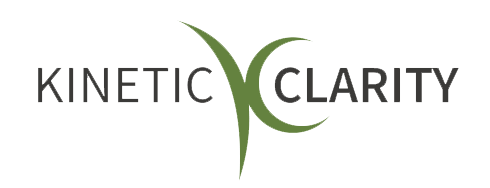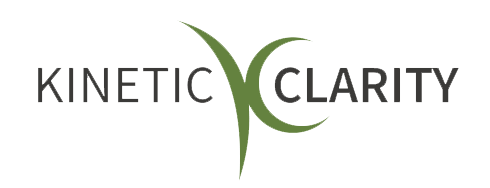Sometimes, The Office is Where Employees Don’t Need to Be
We all work differently, so what if we were allowed to figure out the conditions under which we are most productive?

It's been fun over the past two months to share some of the lessons leaders can learn about being a better, more courageous leader from the show The Office. Dunder Mifflin employees are classic examples of employee disengagement, and management is a hefty "how to not" example. Yet, there may be one more lesson to learn before we close this chapter...
Dunder Mifflin employees never had to deal with the complexities of the pandemic, but we would be interested to see how they handled working from home and flexible work schedules. We predict that the Scranton branch would have seen a boost in employee productivity and engagement.
Without feeling tied to their desks, employees can find the right balance in their lives. Every person’s life is different, and we all have varying needs. We also work differently, so what if we were allowed to figure out the conditions under which we are most productive?
What is "Flexible Work"?
Flexible work can be almost anything that defies the standard 9-5 mold. As an employer, you can set the terms and shape them into a suitable arrangement for you and the employee. If you can remain flexible in your attitude toward a unique work arrangement, you both may be surprised by how effective a flexible work option can work.
Both sides of the equation need to be in agreement and should mutually commit to the conditions. And both employer and employee need to respect the other side’s expectations or the arrangement. Flexible work offers benefits to both parties, so when it is done correctly, it can be a massive win-win.
In today’s work environment, we’ve seen that employee disengagement is at an all-time high. The rules of the workplace are in flux, and employers are scrambling to recover from the Great Resignation and massive disengagement. Offering flexible working options can be one giant step toward righting things and returning to a productive work atmosphere.
By agreeing to try out working arrangements that defy the usual office grind, you are helping your employees feel as if they have some control over their working conditions, and that’s such a gift to them. The feeling that they don’t have control over their work lives can be one reason they become disengaged. One study found that employees are 2.7 times more inclined to disengagement without a healthy work-life balance.
So, improving work-life balance in the office is critical, but it requires trust in your employees. Flexible work arrangements need to be goal-focused rather than process-focused. If the job is getting done and is quality, does it really matter how or where it happened?
Flexible Work Options for Improving Employee Engagement
There is no right or wrong way to go about flexible working opportunities. There are many different ways you can approach a new arrangement; as long as it works for you and your employees, you’ve done it right.
The Future of Working Report of 2022 asked respondents what they would most like to see their company offer. 35.3% said they would most appreciate flexible work hours at their workplace. So, what would that look like?
The National Institute for Occupational Safety and Health (NIOSH) recently defined three main areas of flexible work.
- Flexibility in where employees work. Whether they work from the office, home, or a coffee shop, they can be where best suits them.
- Flexibility in taking leave as needed. Employees have families, of course, and should be able to take time off to deal with family matters with no difficulty. This eliminates tremendous stress from employees during what may already be a stressful time.
- Flexibility in schedule. Remove set hours and allow employees to work around their personal schedules. As a result, the working times may alter from day to day.
Does this mean your employees can come and go as they please? No, of course not. Communicate with your employees to determine a specific framework for flexible working options. You may have some ideas of what you’re willing to accept, and they may also have some proposals based on their needs.
Flexible work can take the form of flextime, a condensed schedule, remote work, freelancing, telecommuting, alternative schedule hours, or a hybrid work model.
The Benefits of Flexible Work Options
Perhaps the most surprising benefit of implementing flexible working arrangements for your employees is that it will likely increase productivity. This is because when choosing their own working hours, they can opt to work at their most productive time.
For example, suppose a worker knows they are more engaged early in the morning and likely to slump in the afternoon. In that case, they won’t need to waste their time trying to slog through a few hours of unproductive work in the afternoons but might be able to get back into things later in the evening.
Employees will use their time well and work with greater efficiency. They can also work longer hours because they’re avoiding commuting time, becoming more effective in their work process. For example, 30% of people said in a survey that they are more productive when they save the commute and work during that time.
Offering the ability to create a flexible work schedule can help reduce employee churn. A personalized schedule is a wonderful perk that employees won’t want to give up. They will appreciate what you’ve given them, and will be more inclined to want to stay with the company. 80% of employees indicated in a survey that they would be more likely to remain in their roles if they could have flexibility.
All of this benefits the company, in turn, because your employees will be more engaged. Flexibility in their jobs keeps them more invested and eager to perform well. They also notice that their performance increases and they perform more confidently.
It’s a win for work-life balance, allowing them to do the things that are important to them and perform their job well. In addition, when they don’t feel they have to choose a career over personal life, they are more engaged in their job performance.
Wrapping Up
Modern working arrangements don’t resemble the working structures of even a decade ago. The global pandemic shook things up, creating eye-opening situations for employers and employees. The mold has been broken, and can be restructured in any number of ways. Flexible work options can be fluid, taking any number of shapes. However, they must be mutually beneficial to both parties. Once a workable arrangement is made, you can sit back and enjoy a new era of renewed employee engagement.












